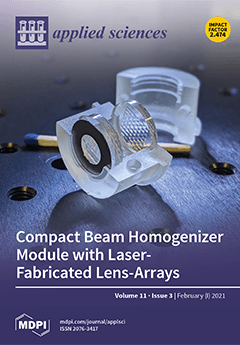In this paper, we hypothesized that ShashamKyeongok-go (SKOG) is a mixed preparation of Adenophorae Radix powder (AR) and Kyeongok-go (KOG). SKOG may be served as a novel preventive and/or therapeutic agent for various respiratory diseases. SKOG were orally administered to ICR mice at
[...] Read more.
In this paper, we hypothesized that ShashamKyeongok-go (SKOG) is a mixed preparation of Adenophorae Radix powder (AR) and Kyeongok-go (KOG). SKOG may be served as a novel preventive and/or therapeutic agent for various respiratory diseases. SKOG were orally administered to ICR mice at 400, 200, and 100 mg/kg once a day for 11 days to examine antitussive, expectorant, and anti-inflammatory effects. The NH
4OH exposure-induced allergic acute inflammation with coughing responses was dose-dependently and significantly (
p < 0.01) inhibited by pretreatment with SKOG at doses of 400, 200, and 100 mg/kg. With these concentrations of SKOG, the thickness of intrapulmonary secondary bronchus mucosa and the number of periodic acid Schiff stain-positive mucous-producing cells were significantly (
p < 0.05 or
p < 0.01) increased, as a result of the increased amount of phenol red secretion. Subsequently, SKOG showed significant (
p < 0.01) anti-inflammatory activities as characterized by reducing the effects of xylene-induced increases of ear weight, thickness of total ear and ear dermis, and number of infiltrated inflammatory cells in the ear dermis, in a dose-dependent manner. These results supported that SKOG might have potential therapeutic effects to be used as an antitussive, expectorant, and anti-inflammatory agents in the prevention or treatment of chronic bronchitis and asthma.
Full article





